While Facebook and Twitter are arguably the most popular (and populated) social media platforms available today, they’re not the only two in existence. In our latest installment of WideNet U, we discussed two of the virtual world’s more undervalued social sites, LinkedIn and Google+, and how you can utilize them to grow your business.
Who Cares About Google+?
Honestly? Hardly anyone. As a social networking site, Google+ simply cannot compete with Facebook’s established following. Not to mention, Google+ doesn’t really bring anything new to the table, so many users don’t see the point in jumping ship. Of course, that doesn’t mean that it can’t be useful. While many people may not actively use Google+, they still use Google. If someone searches for your business, Google pulls information from your profile, such as your location, website link, and phone number and displays it on the results page. So the most important thing you can do with your profile is keep it updated. Whatever important changes you make to your business, whether it’s your location, your website, or even your products, be sure you update your Google+ page with the new information.
This may seem like a minor detail to write about, but keep in mind that 81% of internet users go through a search engine to find a website. People rely heavily on Google to provide them with the correct information. So whether or not you actually use Google+, you can’t let your page waste away in cyberspace. The wrong information could cause you to miss out on potential customers or clients.
LinkedIn and B2B
While LinkedIn isn’t the ideal place to share photos of your meal or talk about your cat, it is a networking gold mine. LinkedIn is basically a huge, online business convention where like minded professionals can connect with one another in search of careers, information, products, or services. Though it may not have as broad an audience as Facebook or Twitter, you can’t deny that it is, perhaps, the best social platform for business to business relations. One of the more useful tools that LinkedIn can provide for your company is the Groups. With LinkedIn Groups, you can connect with professionals in your specific field, or ones like it, and ask questions, seek help, or offer advice to others. It’s a fantastic resource for peer-to-peer communication and a great way to learn or share your knowledge.
Now, considering the professional atmosphere of LinkedIn, your business is required to fit a few specific requirements before setting up a profile (note: these requirements only pertain to business pages). First, you must have a personal LinkedIn profile with a true first and last name, a profile strength rating of at least intermediate, and several established connections. You must also be employed by the company you wish to create a profile for, and you have to possess a company email with a specific company domain. While these restrictions may seem like a bit much, they help maintain LinkedIn’s reputation as a reliable, professional hub and insure that you’re always interacting with established, successful businesses.
Measure Your Success
Like the other social media platforms we’ve discussed, LinkedIn offers its own variety of paid advertising, albeit with a few minor differences. Before you start a paid advertising campaign on LinkedIn, you need to consider what you’re selling and who you’re selling it to. LinkedIn is sort of its own niche market. Products or services that have little to do with the professional world may not be worth the time and money it would take to advertise them. However, if you market primarily to other businesses, then LinkedIn is a great platform for an ad campaign. As always, setting a budget should be your first priority. With LinkedIn, there’s a minimum requirement of $10 a day regardless of how long you run your campaign, and you’ll choose to pay for either clicks or impressions. There are also a handful of targeting options that allow you to narrow down the audience you’re trying to reach such as age, sex, job title, industry, skills, or education. LinkedIn also allows you to create up to six different variations of one ad, which keeps your message fresh as it runs from day to day. Lastly, as with most other paid advertising systems, LinkedIn has its own analytical software that lets you see the daily performance of your ad and measure its effectiveness.Like we said, Google+ and LinkedIn tend to spend a lot of time in the shadow of Facebook and Twitter, but that doesn’t mean they can’t be useful to your business. They have something to offer, and learning how to take advantage of it can have some great benefits. To see the entire presentation, just click here. You can also follow the links to see the first two presentations in our social series on Facebook and Twitter.




